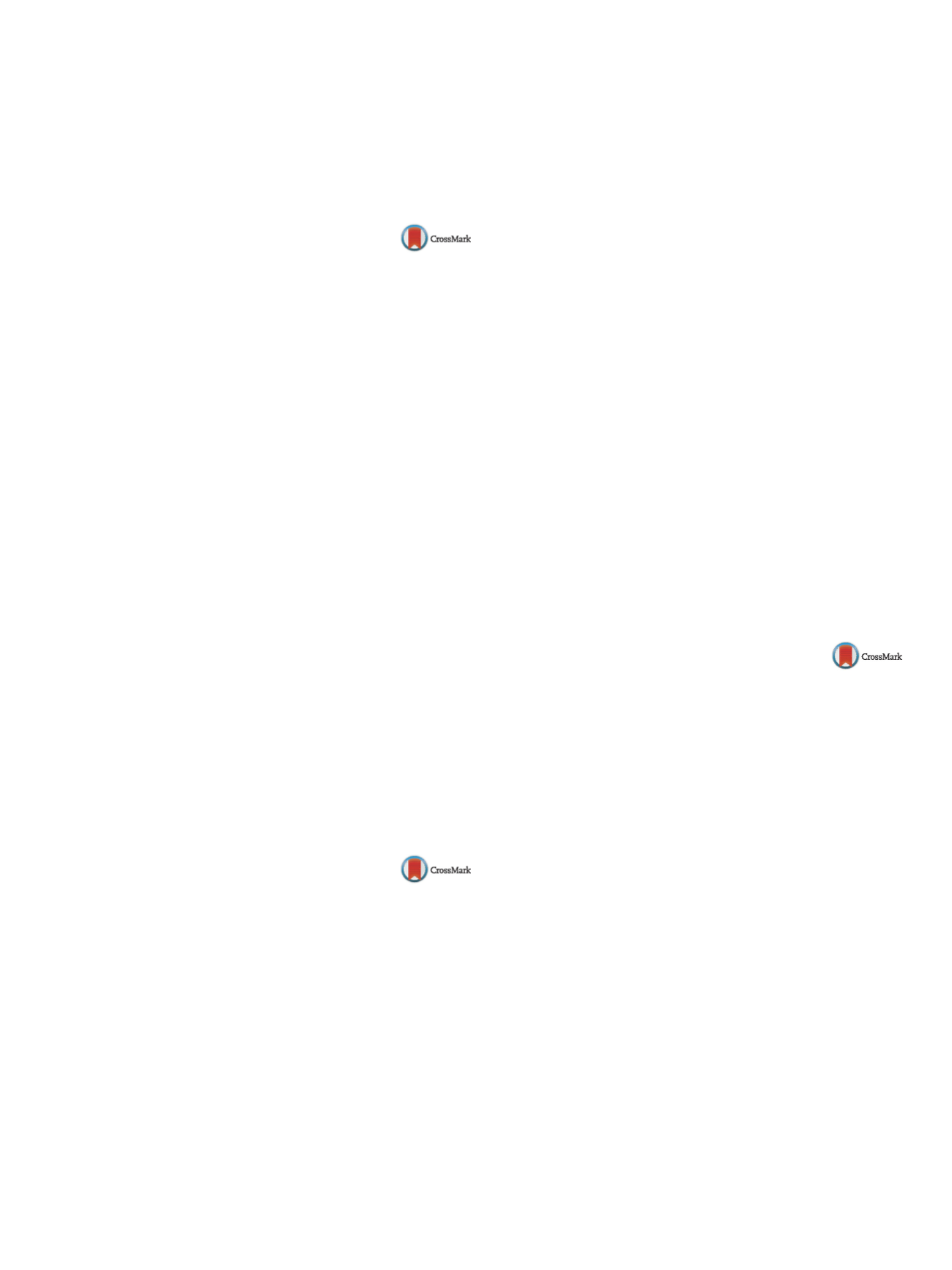

Abstracts / Journal of Clinical Virology 82S (2016) S1–S142
S35
totype Idylla
TM
MERS assay offers the possibility for point-of care
or centralized laboratory testing.
http://dx.doi.org/10.1016/j.jcv.2016.08.067Abstract no: 21
Presentation at ESCV 2016: Poster 28
Flexibility and full automation for clinical
sample extraction – Performance evaluation of
the new bioMérieux eMAG
A. Derome
∗
, F. Gelas, A. Turc, R. Veyret,
J. Bourdin, S. Marcotte, V. Moisy, F. Sutera,
M. Lemoine, D. Heckel
bioMérieux, Centre Christophe Mérieux, 5 rue des
Berges, Grenoble, France
While molecular testing continues to play an increasingly
important role in human diagnostics, Molecular Laboratories
nowadays are confrontedwith numerous challenges resulting from
more comprehensive test menus, consolidation of laboratory test-
ing (including increased traceability), more stringent regulatory
requirements, high throughputs and the need for rapid turnaround
times. Sample preparation remains a key element in the laboratory
workflow and requires processing of multiple human specimens
and samplematrices, handling of different laboratory consumables,
simultaneous extraction of DNA and RNA targets and coordina-
tion of eluates for downstream PCR analysis. Automation of sample
extraction is a common need to master laboratory throughput
and standardization whereas adaptation of automated solutions to
complex workflow requirements remains a challenge. We present
here results of the performance evaluation (e.g.: reproducibility,
precision, LOD, carry-over, tests on different specimen types) of
the new bioMerieux eMAG
TM
which provides full automation of
sample extraction starting from primary tubes and using well
established easyMAG
®
chemistry. Higher throughput, increased
traceability and seamless integration into diagnostic laboratory’s
workflows have been primary design goals for this next generation
platform while keeping the known flexibility of the easyMAG
®
.
http://dx.doi.org/10.1016/j.jcv.2016.08.068Abstract no: 212
Presentation at ESCV 2016: Poster 29
Evaluation of the Beckman Coulter DxN VERIS
Molecular Diagnostics System (DxN VERIS) for
the determination of viral load in plasma from
patients infected with either HBV or HIV-1
A. Constanc¸ a
∗
, K. Rodriguez, S. Fernandes,
C. Correia, M. Helena Ramos
Servic¸ o de Microbiologia, Centro Hospitalar do Porto,
Porto, Portugal
Background:
The recently launchedDxNVERIS systemis a fully-
automated, random-access system for the determination of viral
load in infected patients. The aim of this study was to assess the
performance of the VERIS HCV and HIV-1 assays against the Roche
COBAS AmpliPrep/COBAS TaqMan (CAP-CTM) system and assays
which is in routine use in our laboratory.
Methods:
For method comparison, the plasma from 167 HBV
infected patients were selected for analysis on both platforms. Sim-
ilarly for HIV-1, 188 plasma samples were selected for analysis on
both the DxN VERIS and Roche CAP-CTM instruments. For patient
monitoring, archived plasma samples from a number of patients
covering four time points were analysed on both the DxN VERIS
and Roche CAP/CTM systems.
Results:
For the HBV method comparison, of the 167 speci-
mens tested, 20 samples were “not-detected” on both systems,
a further 32 samples were detected but not quantified on both
systems (the VERIS HBV assay linear range is 10–10
9
IU/mL, the
Roche HBV v2 assay linear range is 20–1.71
×
10
8
IU/mL). Seven
samples were quantified using the Roche HBV assay but “detected-
not quantifiable” on the VERIS HBV assay. A further 11 samples
were quantified using the VERIS HBV assay but were only detected
and not quantifiable on the Roche HBV assay. Of the remaining 97
samples that gave results within the linear range of both assays,
the correlation coefficient was determined to be 0.87 (Spearman,
95% CI 82.0–91.7). Passing-Bablok analysis illustrated an inter-
cept value of
−
0.2898 with a slope of 0.939. The sample’s tested
ranged from 1.01–6.73 log IU/mL. Bland–Altman analysis demon-
strated that there was a
−
0.45 log IU/mL bias on the VERIS HBV
assay when compared with the Roche HBV assay. The overall pro-
files obtained for the patient monitoring analysis showed a good
agreement between both methods. The HIV-1 data is still under
analysis and will be presented later.
Conclusions:
Method comparison between the VERIS HBV and
Roche HBV assays demonstrated an overall concordance of 77%.
Therewas a negative bias on the DxNVERIS systemwhen compared
with the Roche system for HBV. The VERIS HBV assay is a useful tool
in the monitoring of HBV infected patients.
http://dx.doi.org/10.1016/j.jcv.2016.08.069Abstract no: 220
Presentation at ESCV 2016: Poster 30
Performance evaluation of the Aptima
®
HIV-1
Quant Dx and Aptima
®
HBV Quant assays on the
fully automated Panther in comparison to
COBAS
®
AmpliPrep/COBAS
®
TaqMan
®
HIV-1 and
HBV tests
A. Ebel
∗
, C. Bali, L. Guis, S. Merlin
Biomnis Laboratory, Ireland
Background:
Quantification of HIV-1 RNA and HBV DNA viral
load plays a central role in clinical management of HIV and HBV
infected patients, before and during antiviral therapy.
The Hologic Aptima
®
HIV-1 Quant Dx and HBV Quant are quan-
titative assays, being developed on the fully automated Panther
system. The assay is based on real-time Transcription Mediated
Amplification (TMA) technology.
Methods:
HIV
: 191 plasma samples (94 prospective and 97 ret-
rospective) from HIV-infected patients were tested for Aptima
®
HIV-1 Quant Dx Assay, based on HIV viral load, as determined by
routine testing using COBAS
®
TaqMan
®
HIV-1 test.
Reference panels: BioQcontrol P0043HIV-RNA, Qnostics HIV-1,
HIV1 50904 and S1003 HIV-RNA DOM 046200047 were used to
assess sensitivity, reproducibility and linearity.
HBV
: 200 plasma or sera samples (100 prospective and 100 ret-
rospective) from HBV-infected patients were tested for Aptima
®
HBVQuant Assay, based onHBV viral load, as determined by routine
testing using COBAS
®
TaqMan
®
HBV test.
Reference panels: Qnostics 14038 HBV, BioQC control P0041
HBVDNA andHologic panel were tested to assess sensitivity, repro-
ducibility and linearity.
Cross contamination
was evaluated (for both HBV and HIV) by
testing 5 consecutive runs of 15 samples, composed of Hologic high
and low positive control, and negative samples (Hologic diluent).


















